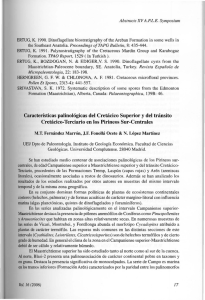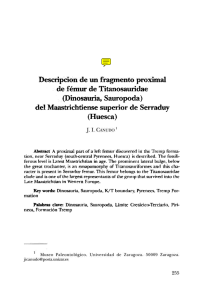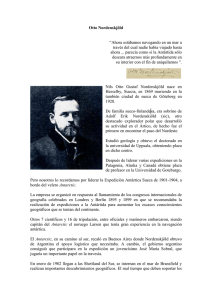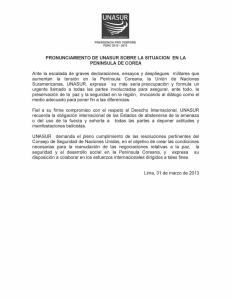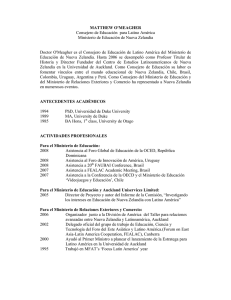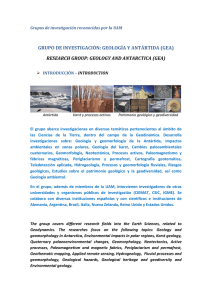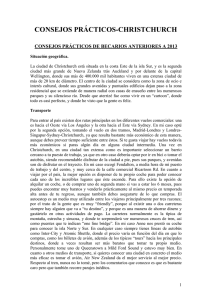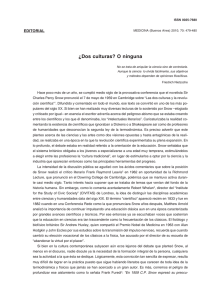Implications for high latitude gondwanide
Anuncio
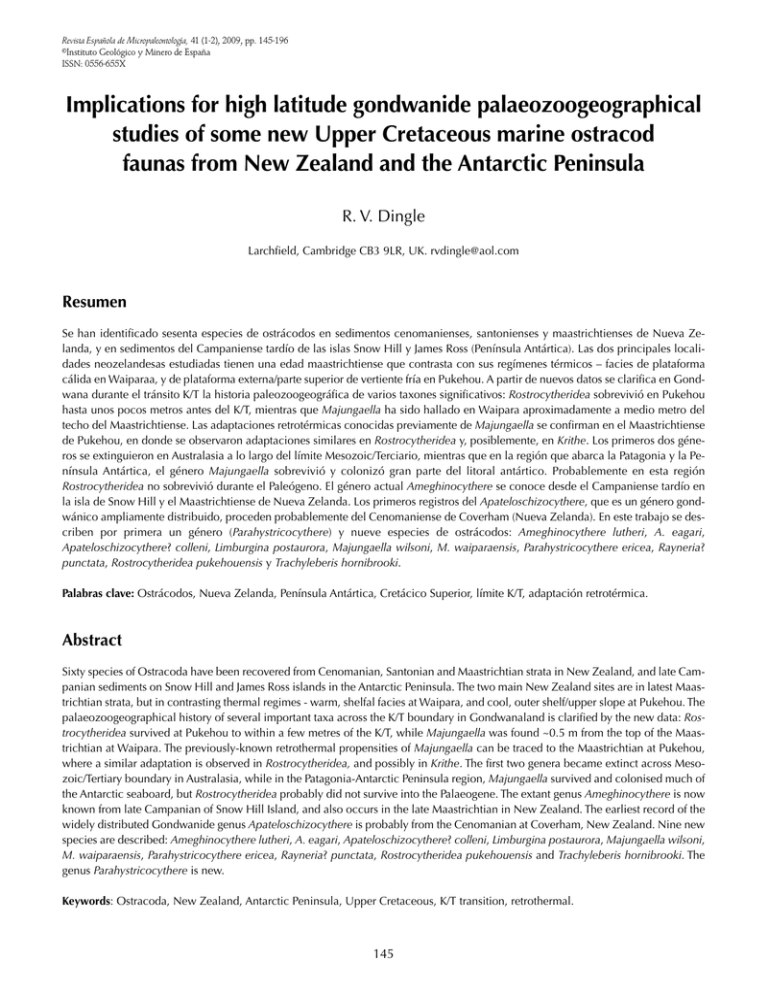
Revista Española de Micropaleontología, 41 (1-2), 2009, pp. 145-196 ©Instituto Geológico y Minero de España ISSN: 0556-655X Implications for high latitude gondwanide palaeozoogeographical studies of some new Upper Cretaceous marine ostracod faunas from New Zealand and the Antarctic Peninsula R. V. Dingle Larchfield, Cambridge CB3 9LR, UK. [email protected] Resumen Se han identificado sesenta especies de ostrácodos en sedimentos cenomanienses, santonienses y maastrichtienses de Nueva Zelanda, y en sedimentos del Campaniense tardío de las islas Snow Hill y James Ross (Península Antártica). Las dos principales localidades neozelandesas estudiadas tienen una edad maastrichtiense que contrasta con sus regímenes térmicos – facies de plataforma cálida en Waiparaa, y de plataforma externa/parte superior de vertiente fría en Pukehou. A partir de nuevos datos se clarifica en Gondwana durante el tránsito K/T la historia paleozoogeográfica de varios taxones significativos: Rostrocytheridea sobrevivió en Pukehou hasta unos pocos metros antes del K/T, mientras que Majungaella ha sido hallado en Waipara aproximadamente a medio metro del techo del Maastrichtiense. Las adaptaciones retrotérmicas conocidas previamente de Majungaella se confirman en el Maastrichtiense de Pukehou, en donde se observaron adaptaciones similares en Rostrocytheridea y, posiblemente, en Krithe. Los primeros dos géneros se extinguieron en Australasia a lo largo del límite Mesozoic/Terciario, mientras que en la región que abarca la Patagonia y la Península Antártica, el género Majungaella sobrevivió y colonizó gran parte del litoral antártico. Probablemente en esta región Rostrocytheridea no sobrevivió durante el Paleógeno. El género actual Ameghinocythere se conoce desde el Campaniense tardío en la isla de Snow Hill y el Maastrichtiense de Nueva Zelanda. Los primeros registros del Apateloschizocythere, que es un género gondwánico ampliamente distribuido, proceden probablemente del Cenomaniense de Coverham (Nueva Zelanda). En este trabajo se describen por primera un género (Parahystricocythere) y nueve especies de ostrácodos: Ameghinocythere lutheri, A. eagari, Apateloschizocythere? colleni, Limburgina postaurora, Majungaella wilsoni, M. waiparaensis, Parahystricocythere ericea, Rayneria? punctata, Rostrocytheridea pukehouensis y Trachyleberis hornibrooki. Palabras clave: Ostrácodos, Nueva Zelanda, Península Antártica, Cretácico Superior, límite K/T, adaptación retrotérmica. Abstract Sixty species of Ostracoda have been recovered from Cenomanian, Santonian and Maastrichtian strata in New Zealand, and late Campanian sediments on Snow Hill and James Ross islands in the Antarctic Peninsula. The two main New Zealand sites are in latest Maastrichtian strata, but in contrasting thermal regimes - warm, shelfal facies at Waipara, and cool, outer shelf/upper slope at Pukehou. The palaeozoogeographical history of several important taxa across the K/T boundary in Gondwanaland is clarified by the new data: Rostrocytheridea survived at Pukehou to within a few metres of the K/T, while Majungaella was found ~0.5 m from the top of the Maastrichtian at Waipara. The previously-known retrothermal propensities of Majungaella can be traced to the Maastrichtian at Pukehou, where a similar adaptation is observed in Rostrocytheridea, and possibly in Krithe. The first two genera became extinct across Mesozoic/Tertiary boundary in Australasia, while in the Patagonia-Antarctic Peninsula region, Majungaella survived and colonised much of the Antarctic seaboard, but Rostrocytheridea probably did not survive into the Palaeogene. The extant genus Ameghinocythere is now known from late Campanian of Snow Hill Island, and also occurs in the late Maastrichtian in New Zealand. The earliest record of the widely distributed Gondwanide genus Apateloschizocythere is probably from the Cenomanian at Coverham, New Zealand. Nine new species are described: Ameghinocythere lutheri, A. eagari, Apateloschizocythere? colleni, Limburgina postaurora, Majungaella wilsoni, M. waiparaensis, Parahystricocythere ericea, Rayneria? punctata, Rostrocytheridea pukehouensis and Trachyleberis hornibrooki. The genus Parahystricocythere is new. Keywords: Ostracoda, New Zealand, Antarctic Peninsula, Upper Cretaceous, K/T transition, retrothermal. 145
